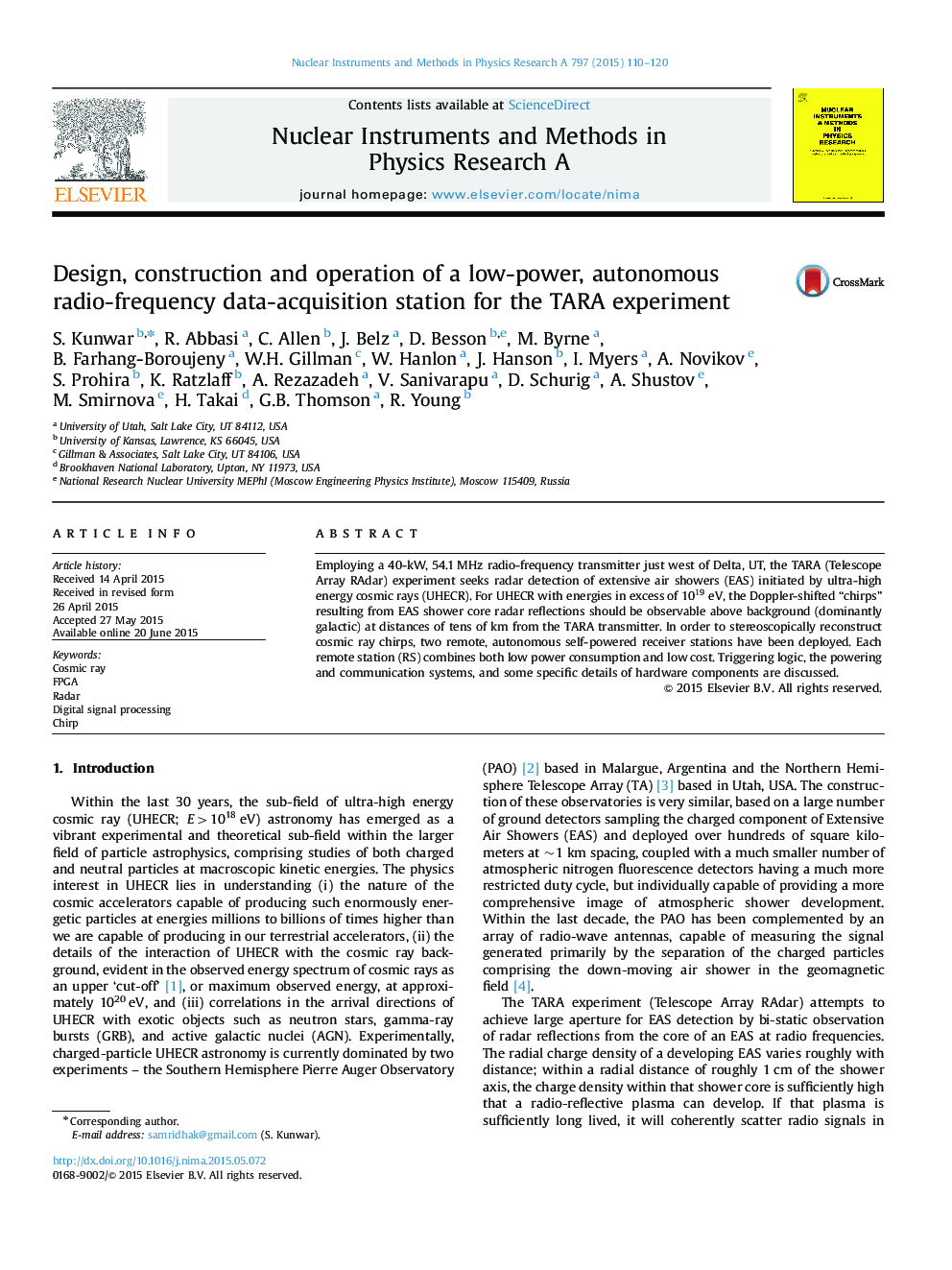| Article ID | Journal | Published Year | Pages | File Type |
|---|---|---|---|---|
| 8172154 | Nuclear Instruments and Methods in Physics Research Section A: Accelerators, Spectrometers, Detectors and Associated Equipment | 2015 | 11 Pages |
Abstract
Employing a 40-kW, 54.1Â MHz radio-frequency transmitter just west of Delta, UT, the TARA (Telescope Array RAdar) experiment seeks radar detection of extensive air showers (EAS) initiated by ultra-high energy cosmic rays (UHECR). For UHECR with energies in excess of 1019eV, the Doppler-shifted “chirps” resulting from EAS shower core radar reflections should be observable above background (dominantly galactic) at distances of tens of km from the TARA transmitter. In order to stereoscopically reconstruct cosmic ray chirps, two remote, autonomous self-powered receiver stations have been deployed. Each remote station (RS) combines both low power consumption and low cost. Triggering logic, the powering and communication systems, and some specific details of hardware components are discussed.
Related Topics
Physical Sciences and Engineering
Physics and Astronomy
Instrumentation
Authors
S. Kunwar, R. Abbasi, C. Allen, J. Belz, D. Besson, M. Byrne, B. Farhang-Boroujeny, W.H. Gillman, W. Hanlon, J. Hanson, I. Myers, A. Novikov, S. Prohira, K. Ratzlaff, A. Rezazadeh, V. Sanivarapu, D. Schurig, A. Shustov, R. Young,
